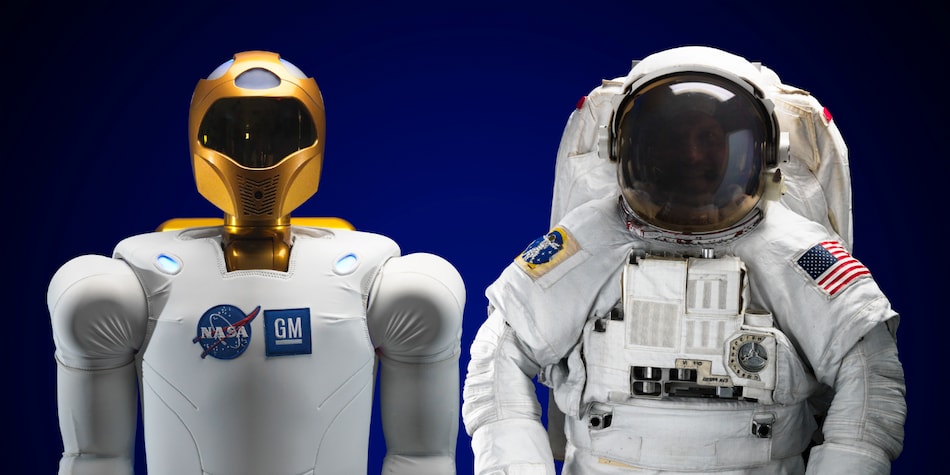Spacewalking robot, sends tweets
-
 1/11
1/11Spacewalking robot sends tweets
Robonaut 2 (R2), who hitched a ride with the space shuttle Discovery crewmembers, is the first humanoid robot to travel to space and the first US-built robot to visit the International Space Station. (Photo: NASA)
-
 2/11
2/11Spacewalking robot sends tweets
R2 will initially participate in operational tests only. If things go according to plan it will be upgraded to assist spacewalking astronauts with tasks outside the space station. (Photo: NASA)
-
 3/11
3/11Spacewalking robot sends tweets
R2 will stay on the space station indefinitely to allow engineers on the ground to learn more about how humanoid robots fair in space. (Photo: NASA)
-
 4/11
4/11Spacewalking robot sends tweets
NASA and General Motors came together to develop the next generation dexterous humanoid robot. The robots – called Robonaut 2 – were designed to use the same tools as humans, which allows them to work safely side-by-side humans on Earth and in space. (Photo: NASA)
-
 5/11
5/11Spacewalking robot sends tweets
Robonaut 2 easily surpasses previous dexterous humanoid robots in strength, yet it is safe enough to work side-by-side with humans. It is able to lift, more than 20-pounds (about four times heavier than what other dexterous robots can handle) both near and away from its body. (Photo: NASA)
-
 6/11
6/11Spacewalking robot sends tweets
You can now follow R2 on Twitter at www.twitter.com/AstroRobonaut. With the help of its team, the robot sent its first tweet on July 26. (Photo: NASA)
-
 7/11
7/11Spacewalking robot sends tweets
Robonaut 2's arms are disassembled to prepare the robot for electronics upgrades. R2 was designed as a prototype; some changes were necessary to prepare it for life on the International Space Station. (Photo: NASA)
-
 8/11
8/11Spacewalking robot sends tweets
Engineers at NASA's Johnson Space Center test software upgrades on Robonaut 2. (Photo: NASA)
-
 9/11
9/11Spacewalking robot sends tweets
NASA astronaut Steve Lindsey, commander of Discovery mission, speaks to members of the media and NASA personnel during Robonaut 2 media day in the Space Vehicle Mock-up Facility at NASA's Johnson Space Center. (Photo: NASA)
-
 10/11
10/11Spacewalking robot sends tweets
Robonaut 2 poses atop its new-wheeled base, Centaur 2, at the Johnson Space Center Planetary Analog Test Site. The Centaur is basically a rover for astronauts and in time a humanoid robot could maneuver it helping in explorations of distant planets. (Photo: NASA)
-
 11/11
11/11Spacewalking robot sends tweets
R2 salutes (Photo: NASA)











